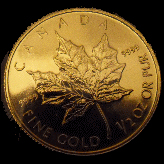Taxing Gold and Silver Investments
by Jerry WhiteGold, silver and other physical metals (along with vintage wines, stamps, artworks and antiques) are classified by the US Internal Revenue Service (IRS) as “collectibles”. When you sell an investment in collectibles that you held for more than a year, your gains are taxed at a higher rate than the rate that applies to stocks, bonds or mutual funds.
Note: The following is for informational purposes, and is not meant to be tax advice to a particular individual or in a particular situation. Because tax laws and regulations change, you should check with your tax advisor about your own situation.
Like many tax topics, this is a complicated subject. It is especially complicated because different types of gold investments (for example, gold mining shares, gold coins, and gold futures) are treated differently. We will look at each type of investment.
Capital gains, in brief
First, a brief explanation of capital gains. Somewhat simplified, a capital gain is the profit you have made on an investment when you sell the asset for more than what you paid for it, net of certain expenses. You are required to pay a tax on your profit called a capital gains tax. If you made a loss (called a capital loss), the loss can be deducted from any capital gains that you had. If you had no other gains, then to a limited extent you can deduct a capital loss from your ordinary income.
The tax rate on capital gains depends on how long you held the asset. If you held the asset for a year or less, the gain is called short term capital gain and is taxed at ordinary income rates. If you held the asset for more than a year, the gain is called long term capital gain and is taxed at a lower rate, which is designed to encourage investment.
Now let’s look at various types of precious metals investments.
Gold, silver and other metals in physical form
As mentioned above, gold, silver and other physical metals (along with vintage wines, stamps, artworks and antiques) are classified by the IRS as “collectibles”. If you held the investment for a year or less, the gain is short term capital gain and is taxed at ordinary income rates. If you held the asset for more than a year, the gain is long term capital gain and is taxed at the special long-term rate for collectibles, currently 28%. The form of physical metal you sold is irrelevant. Gains on gold coins, bars, “gram gold accounts”, and gold certificates are taxed as gains on the sale of collectibles. Even exchange-traded funds (ETFs) that own physical metals are taxed as collectibles.
The wash sale rules, that prevent you from taking a loss and then immediately repurchasing a security, do not apply to collectibles, so that you can a take a loss and then repurchase the metal immediately.
Futures and options
Gold futures (and other metal futures) and exchange-traded gold options (and other metal options) and ETFs that hold futures rather than physical metal are not taxed as collectibles but as futures. Futures that were not sold during the year are nevertheless taxed at the end of the year. They are taxed at a blended rate (60% long-term; 40% short-term), as though they were sold at the end of the investor’s tax year based on their unrealized marked to market gain or loss — that is, based on the closing market price on the last day of the year. If they were sold for a gain during the year, then the tax is paid at the blended rate applied to the gain.
If you take delivery of the underlying gold or silver when a futures contract matures, then you will be taxed at the blended rate based on the market-to-market price (the invoice price) on the day you take delivery. That day will also mark the start of your holding period of the physical asset, and its cost basis will be the invoice price (plus net investment expense). Since it is now physical metal, it will be treated as a collectible when you come to sell it.
Gold mining stocks and mutual funds
Gold mining stocks and mutual funds are subject to the same capital gains rules as other securities — not collectibles. You are subject to the tax when you sell, and the rate depends on whether you held the stock for more than one year or not. The long-term capital gains tax rate on securities is currently 15% if your tax bracket is 25% or higher, but is due to rise unless Congress acts to maintain it. Check with your tax advisor.
Foreign closed-end funds that hold metals are subject to special election requirements. Check with your tax advisor.
Exchange-traded notes (ETNs)
Tax treatment of precious metals-related exchange-traded notes (ETNs) that are based on futures prices is still uncertain, but most investors treat ETNs as though they were securities — not futures — so gains on ETNs held for longer than one year would be long-term capital gains. Needless to say, check with your tax advisor for current wisdom.
Gold held in retirement accounts
There is an important exception to the description above. If you sell an investment that was held in an IRA account (or other non-taxable retirement account), the capital gains tax rate is zero. This means that you may be able to avoid the collectibles tax if you hold your physical precious metals investments in an IRA.
But there is an important issue with collectibles held in an IRA: The only investment type that your broker will allow in a standard broker-administered IRA are securities, so you can hold gold mining shares, mutual funds or ETFs (which the broker thinks of as securities). And indeed, holding a precious metals ETF in an IRA avoids the high collectibles tax rate that would otherwise be payable.
What about physical metals? Your broker will not permit holding physical metals in an IRA that the broker administers, though you can do so in a self-directed IRA administered by a trustee that permits it. There are several firms in the US that will handle this, though they are not securities brokerage firms. However, there are special rules about the form and purity of the metals that can be held in a self-directed IRA, and the metals must be held by a custodian in a secure vault, not under your mattress. If this interests you, you can arrange it through most gold coin dealers.
There is more information about self-directed IRAs, together with the names of trustees, custodians and some reliable coin dealers, in our precious metals investment guide, How to Buy Gold and Silver Today.
Check with your tax advisor
Since Congress changes tax rates and the IRS issues new rules from time to time, check with your tax advisor for current rates and rules. For more information about taxation of gold investments and information on self-directed IRAs, together with the names of trustees, custodians and reliable coin dealers, see the Taxation and IRA sections of our precious metals investor’s guide.
On a related topic, contrary to what some coin dealers imply, your purchases of gold and other precious metals are not reported to the IRS.

Precious Metals Investor’s Guide from TradersGame.com
To learn to invest in gold and silver, avoid pitfalls and save money by buying the form that is appropriate rather than one a salesman wants to sell you, read our precious metals investor’s guide, How to Buy Gold and Silver Today. Read it tonight and start protecting your purchasing power tomorrow.
Articles
Who Sets the Prices of Precious Metals?
Why a Rising Gold Price is Bad News
Hyperflation and Gold: Losing Faith in the Dollar
Invest in Gold to Preserve Your Purchasing Power
Buying Gold to Meet your Investment Goals
Pitfalls to Avoid When Investing in Gold
Making your First Silver Trade
Investing in Platinum-Group Metals
Will the US Government Confiscate Your Gold?

